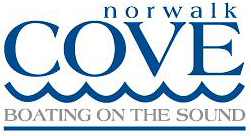Boat Commissioning Checklist
May 15, 2012The 2012 Boating season is here !
This checklist is an aid to make sure you are prepared for an enjoyable and safe season.
Documents: Review your license, registration, insurance and
other important documents pertaining to your boat and trailer,
and store them in a watertight bag or container.
Life jackets: Make sure each person has a properly sized life
jacket in good condition with no rips or missing parts.
Fire extinguishers: Make sure onboard fire extinguishers are
fully charged, properly mounted and the correct class for your
vessel. Turn dry chemical extinguishers upside down to loosen
the powder. Replace or refill expired units.
Flares: Replace outdated flares, and keep old ones on board as
spares.
Charts and maps: Review and update as necessary.
Plugs: Inspect and tighten drain plugs. Make sure rubber seals
or gaskets haven’t cracked or dried out in storage.
Hoses and clamps: Inspect and replace as necessary.
Propellers: Inspect for dings, pitting, cracks and distortion.
Damaged props can cause unwanted vibration and drive train
damage. Make sure connectors such as cotter pins are secure,
and grip the prop to check for looseness. If the shaft is loose,
consider replacing the bearing.
Inboards: Examine the rudderstock to ensure it has not been
bent or compromised.
Hull: Inspect for blisters, distortions, cracks and compromised
rivets.
Water intake strainer: Make sure your strainer is secure,
unobstructed and corrosion free.
Large inboards: Check the engine shaft and rudder stuffing
boxes for looseness before and after launch. Make sure
through-hulls don’t leak.
Outboards and outdrives: Inspect outdrive bellows for cracks,
dryness or deterioration, paying careful attention to the folds.
Replace questionable bellows.
Fluid levels: Check all fluid levels, including engine oil, power
steering and power trim reservoirs. Replace worn-out zincs.
Control cables: Inspect the outer jackets, and replace cables
showing cracks, swelling, corrosion or deterioration.
Fuel lines: Inspect fuel lines, including fill and vent hoses,
for softness, brittleness or cracking.
Fuel tanks: Check your tanks and pumps, and replace filters
annually. Consider using a fuel stabilizer.
Hoses: Inspect cooling, exhaust and blower hoses and pipes for
stiffness, rot and leaks. Make sure hoses are connected tightly;
double clamp them if necessary.
Electrical connections: Inspect for cleanliness and tightness.
Corrosion, especially on battery cables, could indicate a poor
connection. Remove the terminals, and wire-brush them along
with the cable ends.
Running and navigation lights: Make sure all running lights
work. Keep spare navigation bulbs on board.
Emergency lights: Inspect emergency lights and signal devices,
and make sure you have spare batteries.
Ignition kill switch: Ensure it’s working properly.
Bilge pumps: Check for leaks and corrosion, and make sure the
float switch works.
Ropes and lines: Inspect for damage, chafing and deterioration,
and replace as necessary. Pay out and thoroughly inspect your
anchor line. Keep lines untangled and coiled for ease of use.
* This checklist is provided with permission from the United Stated Power Squadron’s Compass www.theensign.org/usscompass/compassarchive.htm The checklist is by no means exhaustive, and should be considered a starting point. You should further modify it to suit your specific boat, trailer, and usage requirements.
Categories: None
